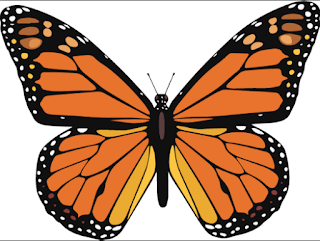I can identify how an artist's culture has an effect on their art.
__________________________________________
I can identify how an artist's life or culture had on effect on their art.
I can use lines to create patterns.
_______________________________________
I can create artwork using organic shapes.

CityScapes 2 . Seascape 1
Seascape 2


Part 1 Behind the Scenes
Part 2 Behind the Scenes
Clay Sculpture
"Travel Through Time Dinosaur Study"
Learning Goal: I can follow steps in order to complete a clay sculpture.
Warm & Cool Colors
___________________________
___________________________
Left Brain vs Right Brain Thinking
TED-ED Left Brain vs Right Brain Myth
Extra Learning (optional): TEDx. Art Brain. Smart Brain

__________________2017-2018 School Year_________________ Minion Self Portraits
TED-ED Left Brain vs Right Brain Myth
Extra Learning (optional): TEDx. Art Brain. Smart Brain

Inspiration:
__________________2017-2018 School Year_________________ Minion Self Portraits

Landscapes, Seascapes, & Cityscapes
Learning Goal: I can create artwork with foreground, middle ground, and background.
Google Earth --> https://earth.google.com/web/
Impressionist Painting Demo --> Click Here to Paint
Sunset & Sky Inspiration --> Click Here!
OIL
Impressionist Painting Demo --> Click Here to Paint
Sunset & Sky Inspiration --> Click Here!
OIL
CHALK
"Water Lillies"
Claude Monet, 1919
Location: Water Garden, Giverny, France
San Giorgio Maggiore at Dusk
Claude Monet, 1912
Location: San Giorgio Maggiore, Venice
"The Poppy Field"
Claude Monet, 1873
Location: Argenteuil
"The Cliffs at Etretat"
Claude Monet, 1885
Location: Aiguille d'Etretat, France
"Looking Down Yosemite Valley, California"
Alfred Bierstadt, 1865
Location: Yosemite Valley, California
How does the last painting look different than all of the other paintings?
-Claude Monet painted with an "Impressionist style"
Crystals
Focus: Science, Warm & Cool Color Schemes, Collage, 3-D Geometric Shapes
Drawing Crystals:

Want to make delicious crystals at home?! Ask an adult to help you with this ROCK CANDY science experiment.
11 Fascinating Artists Inspired by Science
___________________________________________
Mola, which originally meant bird plumage, is the Kuna Indian word for clothing, specifically blouse, and the word mola has come to mean the elaborate embroidered panels that make up the front and back of a Kuna woman's traditional blouse.
Click here for MOLA ART INSPIRATION!
2016-2017 School Year
________________________________________________________________________________A habitat is a place that an animal or creature lives. It provides the animal or creature with food and shelter. There are many different sorts of habitats around the world from forests to grasslands and from mountain slopes to deserts.
Guiding questions:
What if each of our 8 planets had a habitat?
Imagine what kind of creature would live in this habitat if it did exist?
What are some features it would need in order to survive on this planet?
Mercury, Venus, Earth, Mars.
Jupiter, Saturn, Uranus, Neptune
Jupiter, Saturn, Uranus, Neptune
Jupiter, Saturn, Uranus, Neptune
Abstract Art: Usually no subject matter. It is just lines, shapes, and colors. The Abstract Art movement is called Abstract Expressionism because, although the art has no subject, it is still trying to convey some kind of emotion.
Nathan Sawaya
Science Click Me
Technology Click Me
Engineering Click Me
Arts Visual Art Music
Math Click Me
_______________________________________________________________________________
School Year 2015-2016
Symmetrical Butterfly Demo!
STRAWBERRY FIELD RICE FIELD-CHINA

AERIAL VIEW OF FARMS
Quarter 2 Assessment
The Indian Dreamcatcher Beliefs
Handmade dreamcatchers originated in the Ojibwa
Nation, but were later adopted by the Lakota and other American Indian tribes.
Dreamcatchers can be made in a variety of sizes, and are typically decorated
with beads, feathers, fabric and leather. Many Native Americans believe the
dreamcatcher will filter a person's dreams and prevent nightmares.
Symbolism
The dreamcatcher is rich in symbolism, with almost every part having meaning. The circular shape of the dreamcatcher represents the circle of life, with no beginning and no end. This is significant to many Native Americans because they believe that death is a part of life and that the spirit lives on. The dreamcatcher is woven to resemble a spider's web, and a single bead represents the spider. Multiple beads represent trapped dreams.
Protection
Some Native American mothers strapped their infants to a cradleboard while they worked, and dreamcatcher charms suspended from a hoop helped entertain the babies. Native Americans also believed the charms would protect the children by catching and trapping evil. It was customary for children to keep their dreamcatchers throughout their lifetimes.
Dreams
In the Ojibwe culture dreams have many purposes. The Ojibwe people believe that dreams can provide strength and spiritual guidance to aid them in their personal lives. They believe that dreams can show them future events that will affect tribes or individuals. The Ojibwe often make charms to represent symbols shown to them in their dreams that have personal meaning in their lives. They carry those charms with them through their lifetimes and into the afterlife.
Did you know we are the same, but different?
Did you know that our fingerprints are uniquely created much like the pattern of a giraffe or zebra?
Our fingerprints form a very special line pattern. Not one fingerprint is alike!
Even though we are unique, we are all part of a whole.





















































































































No comments:
Post a Comment